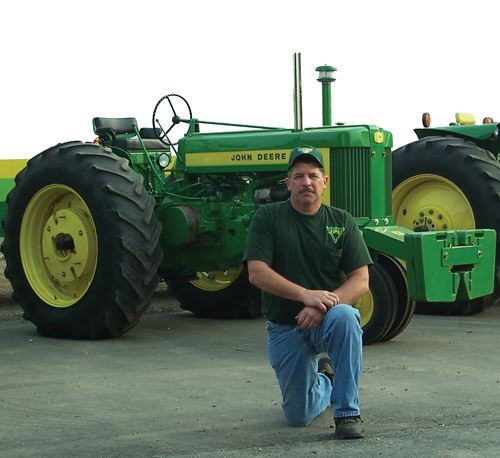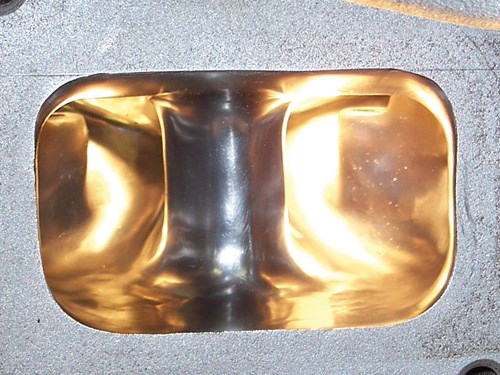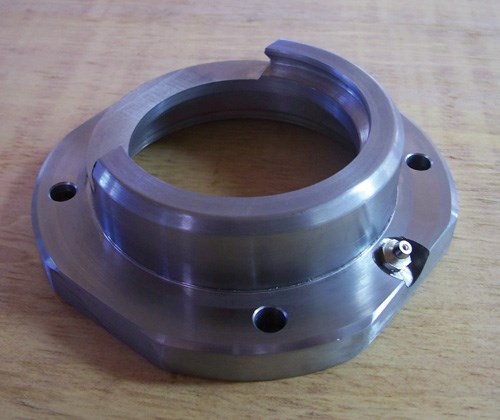CAM Software Helps Make Pastime Profitable
When shop owner Joey Klitzke began to leverage his manufacturing skills to improve his competitive edge in tractor pulls, it wasn’t long before he recognized a business opportunity. FeatureCAM software from Delcam has helped Mr. Klitzke turn his hobby into a profitable business.
Share




Jopen Machinery is a case in point for how an investment in a hobby can turn into a successful business. Tractor enthusiast Joey Klitzke founded the Baraboo, Wiconsin-based shop to fill a niche in designing and manufacturing custom parts for improved engine performance in pulling competitions, in which tractors vie to drag heavy loads as far as possible down a track. As his reputation increased, so did business, necessitating a move from manual programming to CAM. Mr. Klitzke says Delcam’s FeatureCAM software provided the ease of use and programming capabilities he needed to guarantee the future of the business.
Jopen Machinery operates out of an approximately 12,000-square-foot facility with five employees. While the bulk of the company’s work involves turbocharger alterations for tractor pulling, the shop also performs some contract jobs for OEMs in completely unrelated fields. Equipment on the shop floor includes CNC lathes and VMCs as well as a large selection of fabricating equipment and a number of manual mills, lathes and surface grinders.
Mr. Klitzke began his manufacturing career in the printing business, where he learned to leverage the capabilities of complex machinery to achieve tolerances ranging to thousandths of an inch at high speeds. He later started his own landscaping company, and the seasonal nature of that business left plenty of time during the winter for manufacturing his own tractor parts on a Bridgeport mill. It didn’t take long to attract increasing attention from fellow tractor pull enthusiasts who struggled to find suppliers of custom engine parts. Recognizing a possible business opportunity, Mr. Klitzke sold his landscaping company and reinvested the proceeds to found Jopen Machinery in May 2007.
Parts that increase tractor engine performance are typically difficult to find because most are custom-designed or retrofit components, Mr. Klitzke explains about his rationale for founding the shop. Additionally, many of these complex components involve significant reverse engineering, which might be time-consuming or cost-prohibitive for some larger manufacturers. Moreover, Mr. Klitzke says most avid tractor pullers are eager to invest in whatever can give them a competitive edge. "If you’ve got a winning combination—say, something that adds 100 horsepower—they’re more than willing to pay a fair price for quality components," he says.
A second strand of the business came from Mr. Klitzke’s interest in restoring older tractors, for which parts are usually no longer available. When a local charity calendar highlighted one of his restored tractors, the shop attracted additional attention, and Mr. Klitzke was asked to machine engine replacement parts for locomotives showcased at a local railway museum. The shop began to bid on more of these types of jobs as well as OEM work unrelated to engine components, all while demand from the tractor pull sector continued to increase.
Mr. Klitzke knew he needed to expand Jopen’s capabilities. Conversational programming on the shop floor was simply "not feasible," he says. Programming times were too long, and the lack of diagrams, drawings and other such visual information made design and reverse engineering work difficult. He had tried another CAM package, but found programming exceedingly complicated. To address these issues, Mr. Klitzke obtained demo versions of software from a number of different developers. After an evaluation of each, he settled on Delcam’s FeatureCAM. "Ease of use was the first thing that attracted me to FeatureCAM," he says. "I could work out how to program a small part in a few minutes."
FeatureCAM’s intuitive interface was an important factor in getting up and running quickly with the new software package, Mr. Klitzke says. Toolbars and menus are segregated and easily recognizable by function, and the need for complex data entry is minimized. Automatic feature recognition is also a valuable capability that eases programming, he says. Additionally, the software enables customizing tool paths to obtain tailor-made results. For instance, Mr. Klitzke can modify stepovers to obtain higher-quality surface finishes.
The drop-down screen used to perform these tasks is especially useful, Mr. Klitzke says. All necessary steps are listed chronologically and sequentially, eliminating the need to jump back and forth between various screens. "I can pull up a screen and edit stepover, plunge rate, ramp angle or whatever I want in a ladder-type format," he explains. "I run down the list, edit what I want and rerun the simulation to get the final NC code."
Additionally, 3D simulation allows Mr. Klitzke to prove out programs before running them on machines to prevent collisions or other errors. This feature also helps with bidding on jobs or estimating how long a project will take, as cycle time estimates are accurate to within a few seconds of actual machining time, he adds.
Compared with the shop’s previous manual programming approach, FeatureCAM’s primary advantage is speed, Mr. Klitzke says. He can now program simple jobs in as little as 5 minutes, and complex jobs that would have taken about 8 hours with manual programming now take about 20 minutes. "One-off parts are now practical at a reasonable cost because the programming is so fast," he says.
The next step for Jopen Machinery will be a move into five-axis machining, Mr. Klitzke says. This will enable it to meet growing demand for turbocharger impeller wheels, which are complex parts that require higher-end capability than that currently available at the shop. He adds that he expects FeatureCAM’s expandability and five-axis programs will enable efficient machining of such parts. In fact, the move to five-axis has been planned for some time, and the software’s capabilities in this area played a major role in its selection as Jopen’s programming system.
"There is no future in high-volume, low-tolerance work," Mr. Klitzke concludes. "More complex, short-run parts are where the money is, and you can do that work profitably with FeatureCAM."
Related Content
Automated CAM Programming – Is Your Software Really Delivering?
A look at the latest automation tools in Autodesk Fusion 360 software and how forward-thinking machine shops and manufacturing departments are using them to slash delivery times and win more business.
Read MoreHow this Job Shop Grew Capacity Without Expanding Footprint
This shop relies on digital solutions to grow their manufacturing business. With this approach, W.A. Pfeiffer has achieved seamless end-to-end connectivity, shorter lead times and increased throughput.
Read More6 Machine Shop Essentials to Stay Competitive
If you want to streamline production and be competitive in the industry, you will need far more than a standard three-axis CNC mill or two-axis CNC lathe and a few measuring tools.
Read More5 Tips for Running a Profitable Aerospace Shop
Aerospace machining is a demanding and competitive sector of manufacturing, but this shop demonstrates five ways to find aerospace success.
Read MoreRead Next
5 Rules of Thumb for Buying CNC Machine Tools
Use these tips to carefully plan your machine tool purchases and to avoid regretting your decision later.
Read MoreRegistration Now Open for the Precision Machining Technology Show (PMTS) 2025
The precision machining industry’s premier event returns to Cleveland, OH, April 1-3.
Read MoreSetting Up the Building Blocks for a Digital Factory
Woodward Inc. spent over a year developing an API to connect machines to its digital factory. Caron Engineering’s MiConnect has cut most of this process while also granting the shop greater access to machine information.
Read More






















.jpg;maxWidth=300;quality=90)














